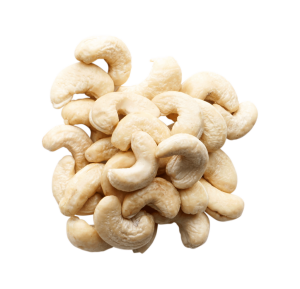BACKGROUND: Cashew nut (CN) allergy appears to be increasing. Reactions are variable and may include anaphylaxis. AIM: To describe the clinical features of CN allergy in a group of children attending an allergy clinic with suspected peanut allergy and confirmed sensitisation to CN. METHODS: Patients were identified retrospectively by reviewing the Immunology Database at University Hospital Galway over a 5-year period, Oct. 2010 to Sept. 2015. Patients confirmed sensitised to CN (specific IgE > 0.35 kUa/L, ImmunoCAP Assay) were selected and contacted. RESULTS: Over the 5-year period, 115 children were identified; 102/115 were individually contacted. Of the 102 children, 55 had a history of prior CN exposure with confirmed clinical reaction, 43 had no prior CN exposure, and 4 were sensitised and tolerating CN. For those with clinical CN allergy (N = 55), 30 (55%) were male and median age of onset was 2 years (lower quartile 1.5, upper quartile 4.8). Severity of reaction was graded as mild for 13 children, moderate in 13 additional children, and severe in 29 children. Median CN serum IgE level was 3.2 kUa/L (range 0.36 to > 100) in the clinical reaction group, 2.91 kUa/L (range 0.36 to > 100) in the sensitised group, and 3.4 kUa/L (range 0.94 to 5.21) in those tolerating CN. IgE values were not significantly different between those with mild, moderate, or severe reaction to CN (p = 0.346). CONCLUSION: Children are ingesting CN at a young age with more than half of allergic reactions reportedly severe in nature. The specific CN IgE value was not helpful in predicting severity of reactions.
